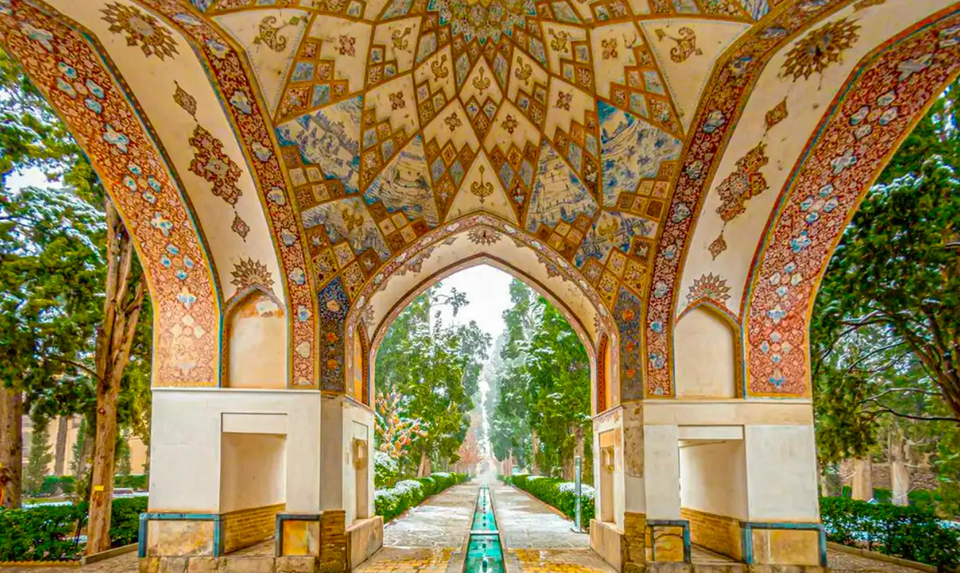The Hidden Beauty at the Heart of Islam

Recently, a very kind sister in our blessed ummah — a sister from Lebanon — sent me a few wonderful books which now bless my small but growing library. Of these books, one of them is a beautiful copy of Al-Sahifa al-Sajjadiyya, also known as ‘The Psalms of Islam’. This is a book of Islamic supplications, and it is the oldest prayer manual in Islam. It is considered a seminal work of Islamic spirituality.
Not only is the primary work itself wonderful, but the edition I have comes with a phenomenal introduction by the translator who is none other than the inimitable Dr. William Chittick. The introduction is a stand-alone work in and of itself.
Reading through the introduction today, one section particularly struck me. Dr. Chittick speaks to much of the misunderstanding of Islam in ‘the West’ as something dark, gloomy, forbidding, ugly, etc. — some misconceptions that I once had myself. I would like to quote this passage by Dr. Chittick in length. He writes:
In spite of studies that have rejected the idea, many people in the West still believe that ‘true Islam’ lies in simplicity, austerity, legalism, formalism, and a God perceived as Just and Transcendent. Hence those elements of Islamic civilization which demonstrate complexity, subtlety, warmth, love, inwardness, spirituality, and a God of mercy, compassion, and immanence are seen as largely extraneous to or reactions against QURANIC Islam. Scholars such as Massignon have pointed out that a person of spiritual sensitivity only needs to read the QURAN for such ideas to be dissolved. But few people who have adopted the old stereotypes possess this sort of sensitivity or would be interested in changing their preconceived ideas, lest sympathy be stirred up in their hearts. It is not my aim here to reject, as so many have done before me, these common biases concerning the nature of ‘true Islam’, but I would like to point out that a work like the SAH’EEFA brings out an inward dimension of Islam which may be much more difficult to perceive in other early texts.
When scholars and other outsiders look at Islam, they naturally perceive what can be seen at first glance, that is, events, written reports and records, social relationships, and so on. It is not easy to look into people’s hearts or to investigate their personal relationship with ALLAH, nor are most people interested in doing so. If there is a way into hearts, it must come by studying those inward concerns of individuals as reflected in their outward activities and writings. But those dimensions of Islam which have caught the most attention of outside observers are external and obvious, and they also happen to be relatively devoid of the love and warmth normally associated in the West with spirituality.
Islamic civilization as a whole is much like a traditional Muslim city: The outer walls make it appear dull and somber, and it is not easy to gain access to the world behind the walls; But if one becomes an intimate with the city’s inhabitants, one is shown into delightful courtyards and gardens, full of fragrant flowers, fruit trees, and sparkling fountains. Those who write about Islamic history, political events, and institutions deal with the walls, since they have no way into the gardens. Some of the gardens are opened up through the study of Sufism, art and architecture, poetry, and music, but since all of these have appeared in specific historical forms influenced by the surrounding environment, their deeply Islamic roots can easily be lost to sight. The most traditional and authentic gardens of the city, and the most difficult of access, are the hearts of the greatest representatives of the civilization. It is here that the supplications handed down from the pillars of early Islam can open up a whole new vision of Islam’s animating spirit, since they provide a full flowering of the Islamic Ideal.
Indeed, the ‘Psalms of Islam’ are beautiful. But Dr. Chittick makes a larger point in this brief passage. The beauty of Islam is truly like a hidden, inner garden — with flowing fountains and waterways, with fragrant flowers and all manner of budding fruits and birds of the air with delicate plumage… a spiritual delight. But truly, much of this is hidden by those who have not peered beyond its outer desert walls and into the inner courtyards.
There is no way to ‘force’ one to see. After all, there is no compulsion in religion — even here. Allah guides whom He will. He who has eyes to see, let him see.

If you like this content, please consider a small donation via PayPal or Venmo. I am currently studying Islam and the Arabic language full-time, and any donation — however small! — will greatly help me to continue my studies, my work, and my sustenance. Please feel free to reach me at saidheagy@gmail.com.
Thank you, and may God reward you! Glory to God for all things!